Reykjavík’s Hallgrímskirkja is officially the sixth-tallest structure in Iceland, but the way it towers over everything else in the Icelandic capital, it might as well be the tallest building in the world. Although built in a style that makes it seem like a Norse-Pagan worship hall, it is in fact a monument to Lutheranism, whose adherents were never as cool as the Vikings, even in their heyday.
It was number one on a long list of things to see on my trip to Iceland, which boasts one of the world’s highest atheist populations. The irony was not lost on me, nor on whichever God was calling the shots the first day of my trip.

Storm of the century, read the message, not a second after I arrived at the church. It was from my Icelandic friend Hjörtur, who proofread my itinerary to make sure there were no potentially deadly diversions in it. 100 mile-per-hour winds and sub-zero temperatures—like a hurricane with snow.
I would’ve knelt down and said my prayers, had it not been for all the ice on the ground.
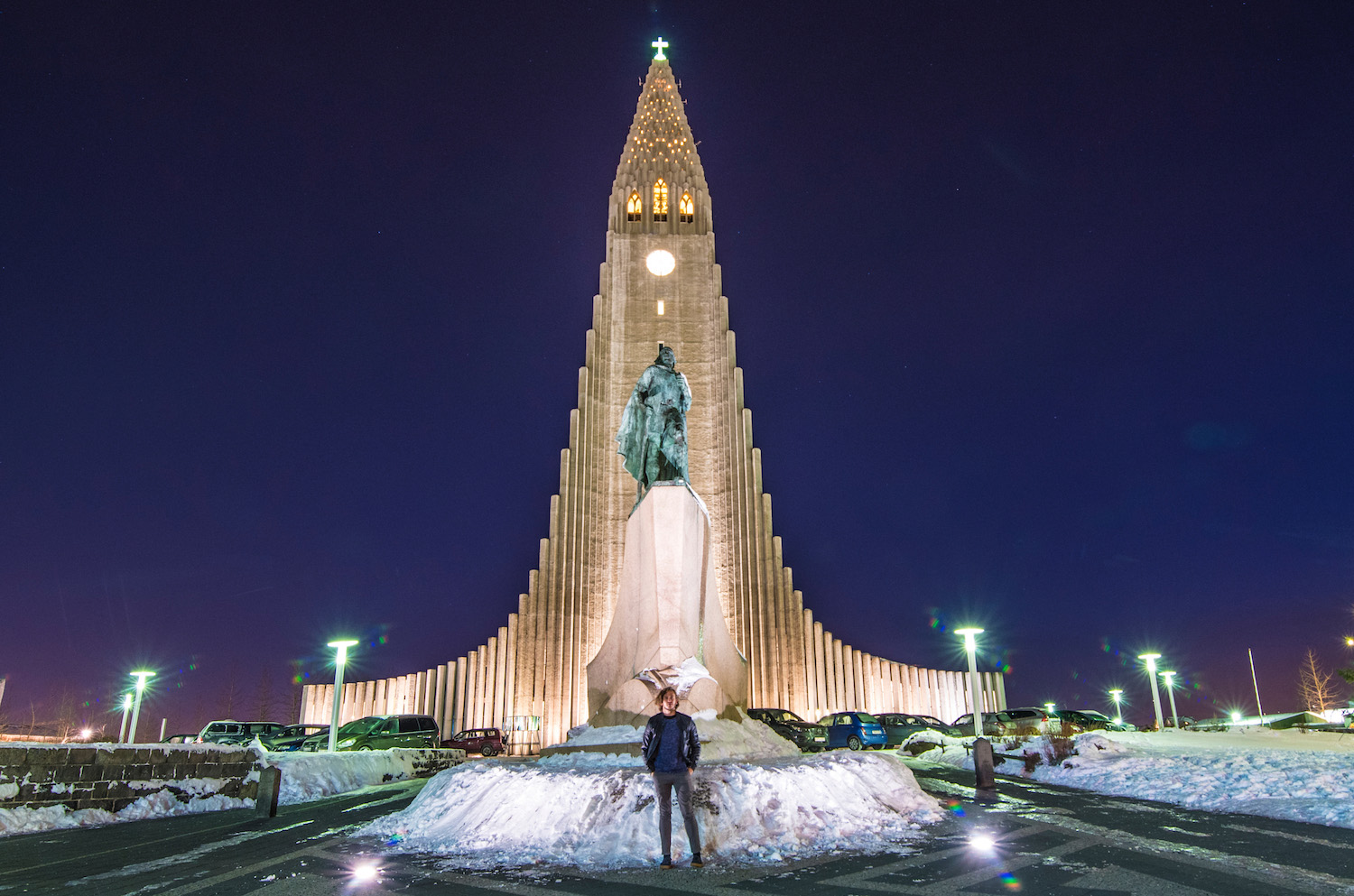
I left Reykjavík four hours before dawn the following morning—7 a.m. at this time of year. Imminent apocalypse or not, I wanted to get some sightseeing in, particularly because temperatures the evening before had made Hallgrímskirkja the first and last place I visited during my short stay in Iceland’s capital.
By noon in day two I’d seen a pair of waterfalls—Seljalandfoss and Skógafoss—and was on my way down to the black lava beach at Reynisfjara. The weather was rapidly (and conspicuously) deteriorating, but I planned to drive all the way down to the beach, even to take pictures, until another message from Hjörtur appeared.
Roads closing in 30 minutes, it read, Hurricane-force winds expected within the hour. I hope you’re close to Vík already.
I’m 7 km away, I wrote back, after consulting with Google Maps and making the potentially self-saving decision to turn around. I think I’ll get there just in time.
The roads re-opened just as I was finishing my breakfast the next morning, in spite of Hjörtur having told me I should expect being stranded until midday. I was in a particular rush on this day, which more than any others on my trip was not at all about the journey and entirely about the destination: Jökulsárlón, an “ice lagoon” whose importance I’ll explain in greater detail in just a couple paragraphs.
In any case, after several hours driving over impossibly lonely landscapes made all the more devastating by the still-horrid weather, I pulled into Jökulsárlón’s parking lot—and directly onto a patch of rain-slicked, solid ice, onto which I immediately slipped and fell backwards the moment I stepped out of my car.
In spite of my being on Iceland’s hit list, I woke up my third day in the country committed to seeing the rest of what was on my own. Jökulsárlón had originally been near the top of it, but my near-death incident the day before had jogged my memory: It wasn’t a lagoon of icebergs, but a beach covered in icebergs I was searching for. Allow me to explain.
My entire motivation for visiting Iceland in winter was a music video. And although I forgot my sparkly white coat and ice-queen tiara at home, the thing I wanted to do most in Iceland (excepting, of course, my imaginary communion with Viking worshippers at Hallgrímskirkja) was to strut across that beach like Jonna Lee.
Stretching out before my eyes, I sang to myself as the sun slowly began to rise, its dim light making the chunks of ice on the beach (which, it turns out, is located at the mouth of the lagoon) sparkle like diamonds. All riches a ruler requires.

My third day in Iceland was far and away my most beautiful up to that point, but by sunset, it had also become my most terrifying. I’d been driving in and out of the gorgeous fjords in the eastern part of the country for about an hour when I felt as if the road dropped out from under me.
My car spun in a full circle and came no more than a foot from falling off the edge before I gained control of it. It was only upon stepping out of the car—and nearly repeating my fall from Jökulsárlón—that I realized the road was covered in a thick sheet of ice, a fact its gray coloring made impossible to ascertain by sight alone.
To make matters worse, Iceland’s road authority doesn’t seem particularly fond of guardrails, even on roads that meander along cliff sides hundreds of feet above the sea. To make matters even worse than that, both of the first two roads that were supposed to have taken me over the mountains and to the town of Egilsstaðir were closed, which meant I had to flirt with almost-certain death for another hour, night setting in all the while.
I felt briefly relieved when the road finally veered away from the sea and a tunnel—a dry, warm tunnel—opened up in the mountain I thought I was going to drive over. But my enthusiasm vaporized when I exited said tunnel onto a steep, downward slope, snow swirling around me in the darkness like a whirlpool, sheer drops on both sides—and a slick road beneath.
Iceland is trying to kill me, I sighed.
Iceland in winter, with its four-hour days and 20-hour nights, feels like a time warp, which can make time pass extremely fast or extremely slow, depending on the day or night.
The day after my—miraculous—safe arrival in Egilsstaðir passed extremely quickly, on account of a heavy snowstorm that blocked whatever light I might’ve enjoyed that day. This was just as well: The landscapes I drove through were flat and boring; my would-be relaxing excursion to one of Iceland’s lesser-known hot springs was all but ruined by the inane conversation and vocal fry of a septuagenarian American couple, the only other humans there.
When I arrived in the small coastal town of Blönduós the following day, however, I began to see things from the other side of the vortex.
You see, I noticed a funny thing the moment I parked my car in front of my cottage: The sun—the actual sun!—the whole thing, seemingly frozen in a sunrise or sunset position. The rising/setting sun, and a mostly clear sky around it, which meant one thing: The aurora would be coming out.
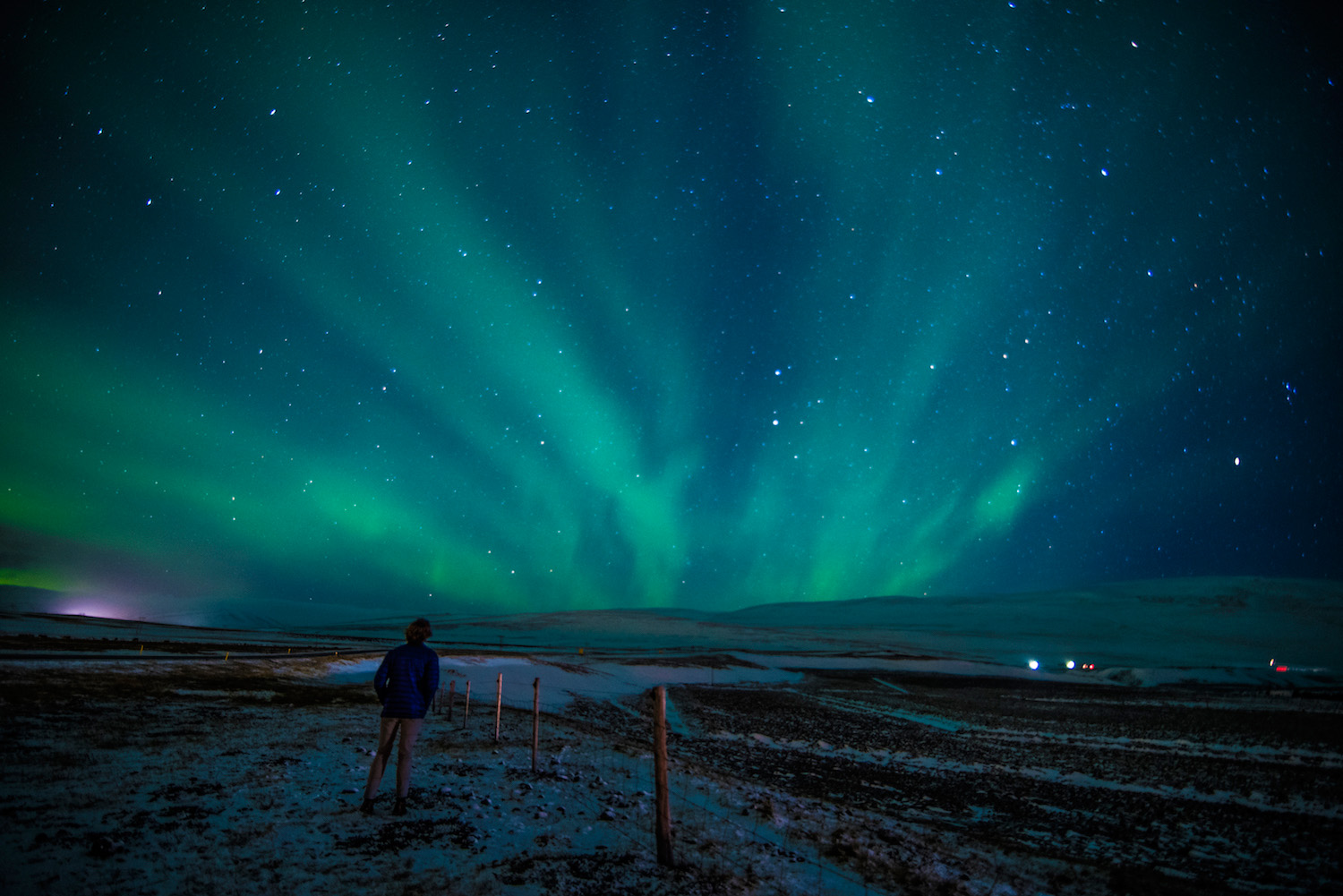
I saw the aurora for the first time last year in Finland and truthfully, I’ve never had my heart set on seeing it again. It’s amazing, don’t get me wrong, and I’m sure it never ceases to be so, but you can only have your “first time” once.
Also, photographing the aurora is difficult, from the physical endurance required to stay up so long past sunset and to brave the cold that accompanies darker-than-dark Arctic nights, to the technical prowess needed to properly expose and focus a shot—even a small mistake can result in a completely ruined photo.
I knew all these facts going into my Iceland aurora experience, of course, which makes the result of that photoshoot all the more disappointing.
I knew exactly the steps I needed to take to make sure my shots didn’t look like shit (including, most importantly, to make sure my shots didn’t look like shit before I retreated to the warmth of my cottage), which is why it was so devastating that I realized only upon removing my thick wool socks that precisely zero of my shots were in proper focus.
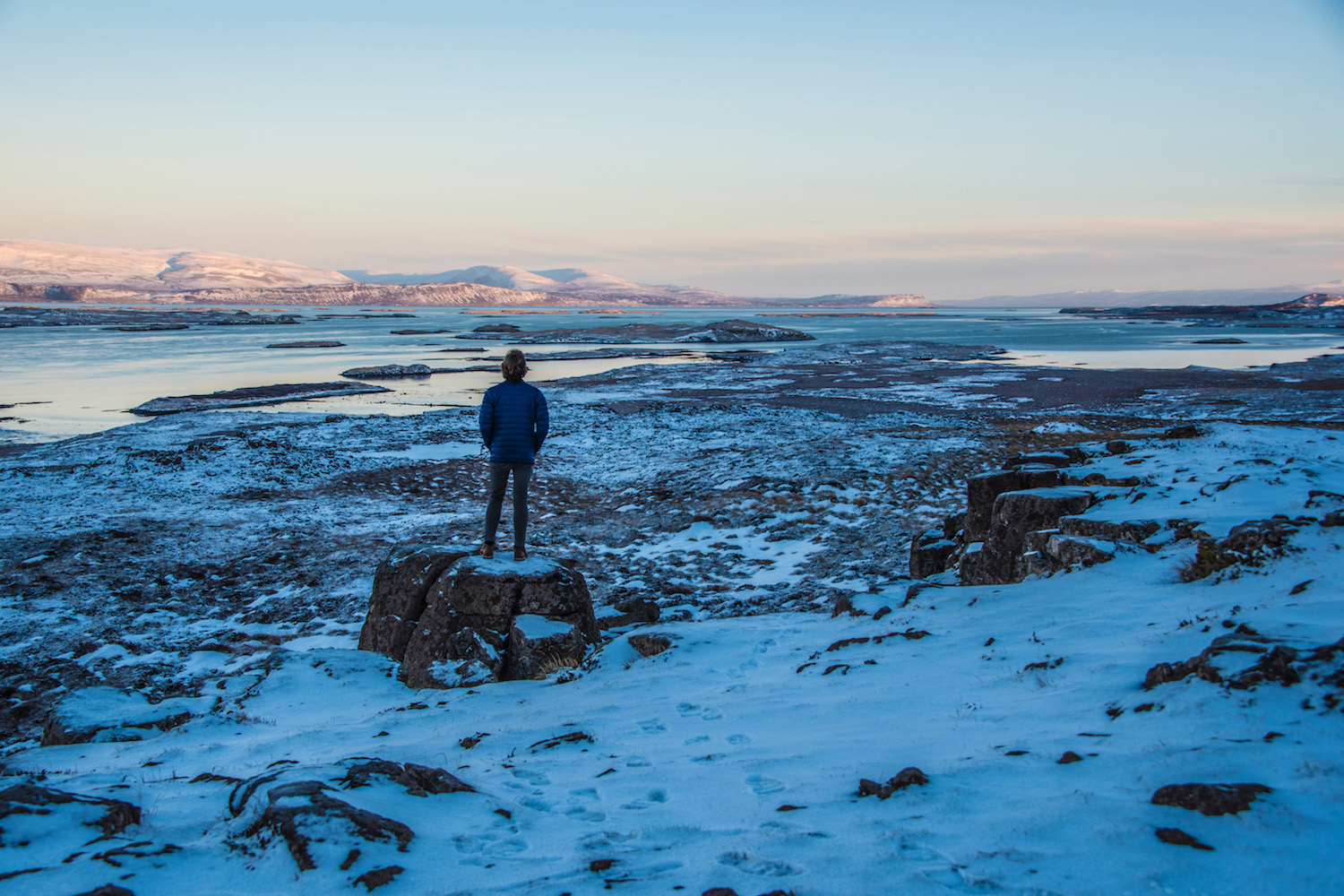
As I headed west on Iceland’s Ring Road the next morning, toward mountains that would’ve made a far better backdrop for the Northern Lights than the random farmer’s field I’d settled on the night before, I initially continued feeling regretful.
But as the sun began to rise, painting everything in front of me in a fluorescent orange-pink, I realized the only thing scarier than Iceland was the unrealistic standard to which I often hold myself.
The incredible light emboldened me, both as a driver and as a human, as I headed toward the Snæfellsnes Peninsula. This feeling heightened as the landscape around me grew more ubiquitously Arctic, even if I did feel slightly anxious as I wondered whether the clear skies would persist long enough for the aurora to appear once more.
Something tells me you’re right where you need to be, I reassured myself as I stepped onto the black lava beach, which was bathed in the most beautiful pink light I think I’ve ever seen. But you might not be if that tide creeps up any more quickly.
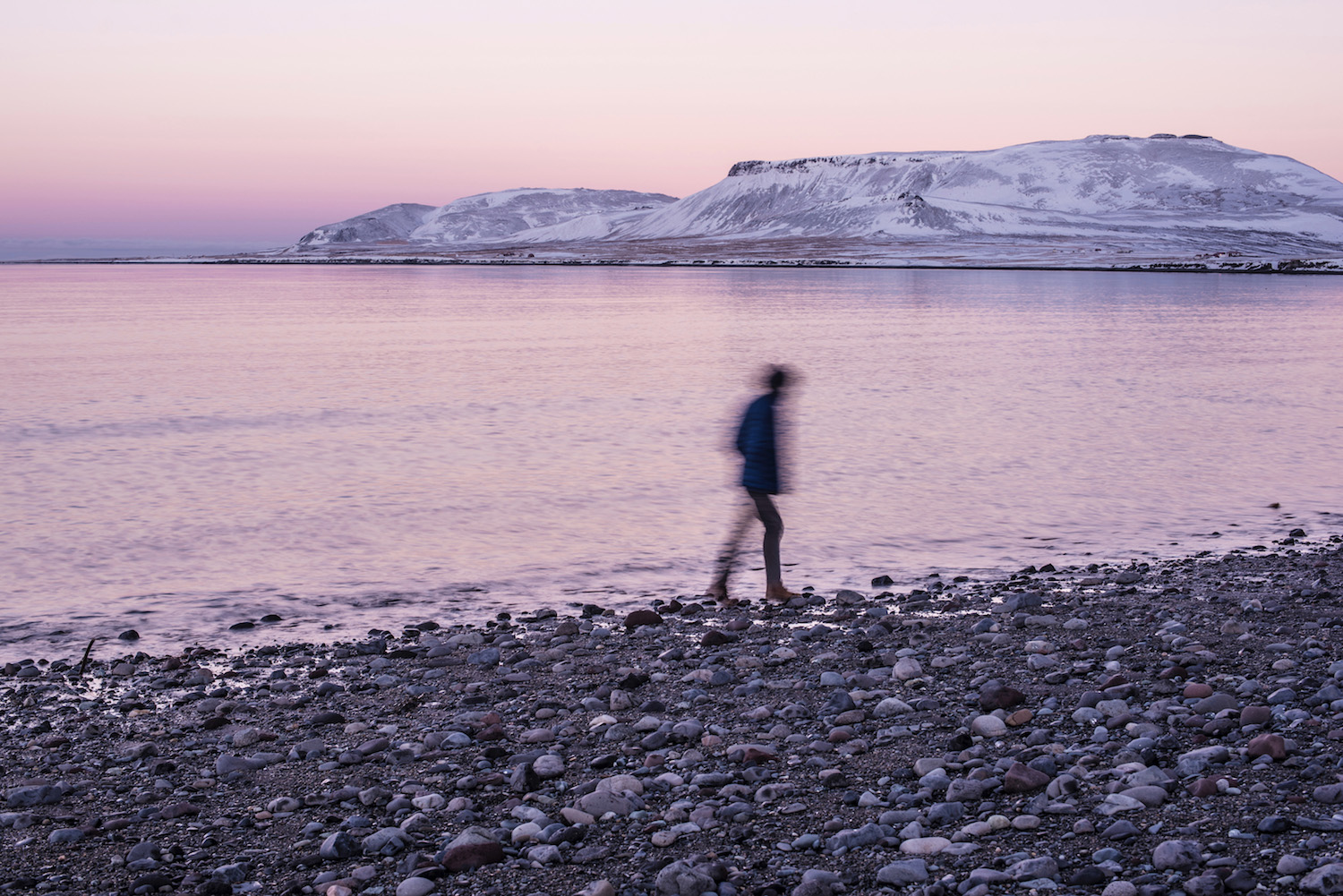
A few minutes before I arrived in Grundafjörður, where I’d be spending my night on the peninsula, I’d driven over a bridge I felt would be perfect for photographing the aurora. When I drove back onto said bridge just after 10 pm, I was puzzled by the barbed wire that separated the parking lot from the sea, and the fact that I hadn’t noticed it during the day.
I doubt the owner will care if I hop this fence, I laughed as I recalled how many cars—zero—I’d seen during my drive there. He probably hasn’t been here for years.
I’d just set the self-timer on my camera and walked down to the beach when I heard the loud splash in the water. Surely no one is swimming, I reassured myself and held still for the following 25 seconds as the shot exposed.
Then, a deep breathing sound. Maybe there’s some kind of endangered animal down on the beach? I wondered. Or more likely dangerous, since I’m in Iceland. When I shined my phone’s flashlight, however, I saw nothing.
It wasn’t until I heard the unmistakable sound of air being forced through a blowhole that I realized what was really going on. There are whales in this bay, I realized as a smile the circumference of the Arctic Circle came across my face.
I immediately hopped back over the barbed-wire fence, as much out of respect as because I secretly feared one of the whales would beach itself and drag me to a certain death in the cold, dark water.
Hey, you can be filled with terror and smile at the same time—it’s almost a requirement here.
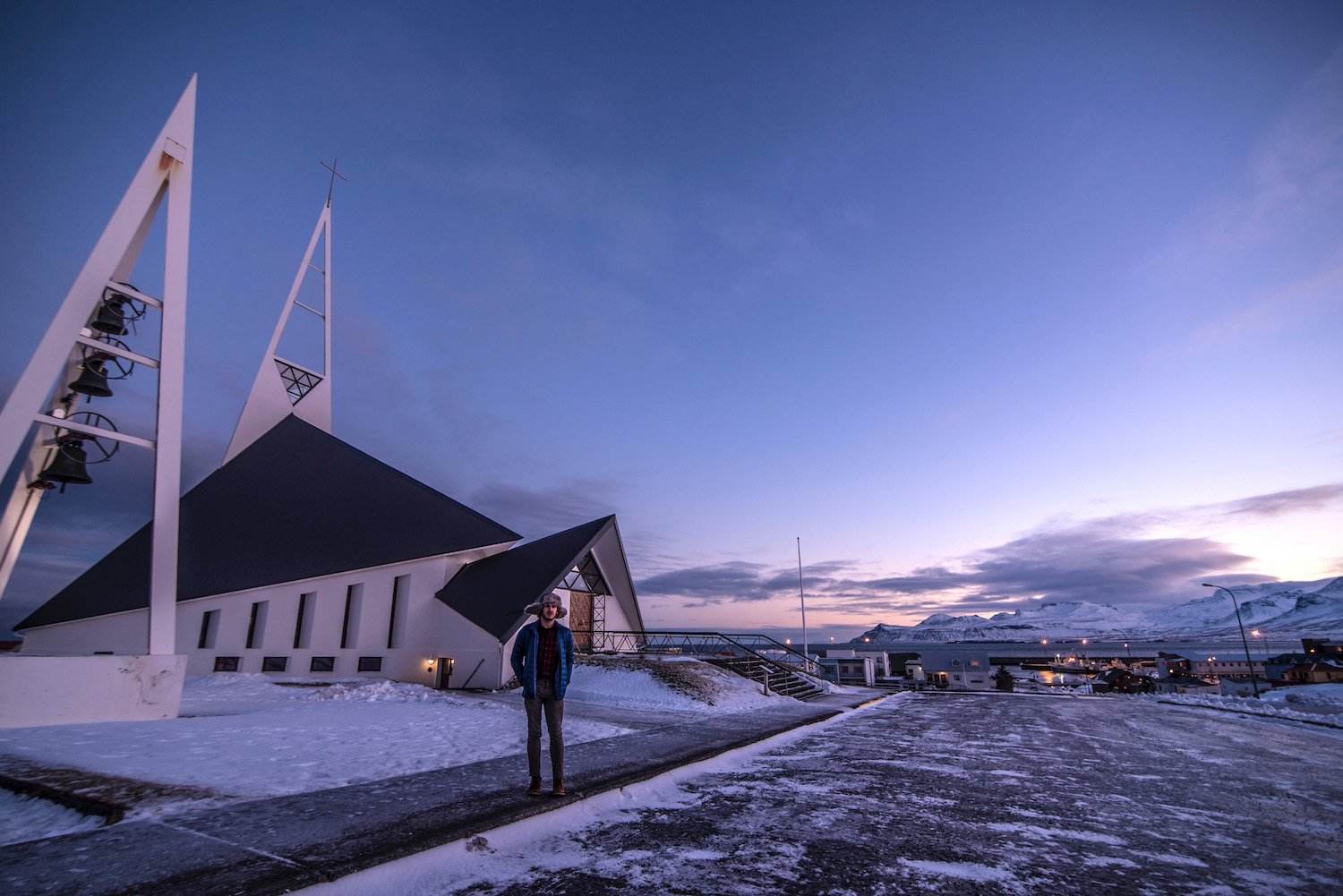
I’d made the long journey to Snæfellsnes for the wild, untamed nature, but if I’m honest it was the church in the town of Olafsvík that most profoundly captivated me. It wasn’t as imposing or even as impressive as Hallgrímskirkja, but it seemed as if it grew out of the land, with its pure white façade and jagged edges and perfect positioning on the hillside.
As I stood at the door to the church and looked down to the harbor, I again reflected on the apparent contradiction that had begun my trip: The allure of religious structures in a country full of atheists (or empty of them, as it were).
And I realized in that moment that it wasn’t so much a contradiction as a dichotomy, not so much a paradox as a redundancy—religion isn’t so much obsolete here as it is superfluous. The forces of nature rule over Iceland and inspire fear in people—certainly, first-time visitors like me—in a way that even the most vengeful God could never dream of.
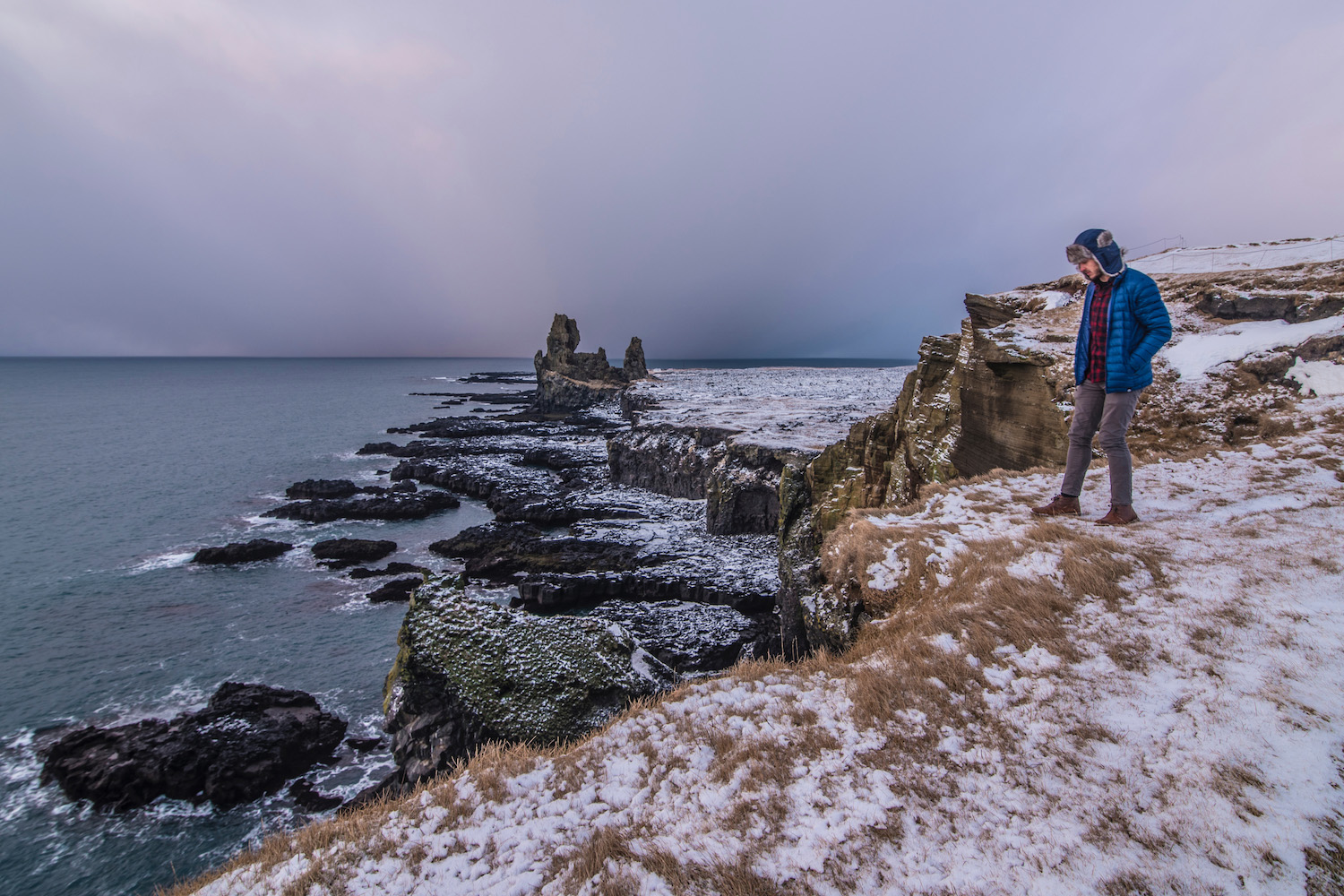
I secretly wish that all my final days in a particular country are rainy and ugly—it makes it easier to say goodbye. Iceland, you won’t be surprised to learn, delivered in spades.
My contingency plan—in case the sun came out, this is—had been to hit up Reykjavik again before my flight, to see place other then Hallgrímskirkja and take pictures of things besides it. But my time in Iceland, it seemed, was destined to end just as it began: Bypassing the capital almost entirely.
As I made my final approach to Keflavík Airport, I saw a sign bearing words I’d seen many times during my trip to Iceland. Goda ferð, it read, which means “safe journey.”
By the grace of God, I smiled as I pulled into the rental car return lot, mine shockingly untainted after my 2,200 km journey. Whatever that means around these parts.

Robert Schrader is a travel writer and photographer who’s been roaming the world independently since 2005, writing for publications such as “CNNGo” and “Shanghaiist” along the way. His blog, Leave Your Daily Hell, provides a mix of travel advice, destination guides and personal essays covering the more esoteric aspects of life as a traveler.








